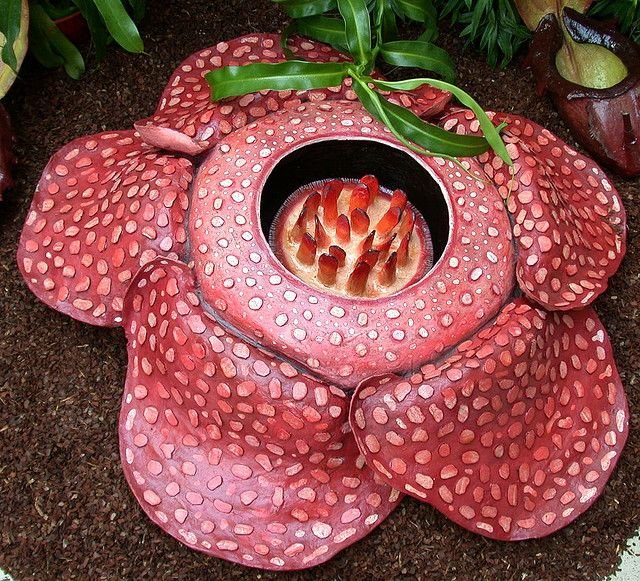The World’s Biggest Flower

Please vote me and subscribe if you satisfy on my blogs thanks and more blogs to come my steemit friends.
“COME with me, Sir, come, a flower, very large, beautiful, wonderful,” said Joseph Arnold’s excited guide during a plant-collecting expedition on the Indonesian island of Sumatra. On following his guide, Arnold, a British botanist, saw something he termed “truly astonishing.” It was an amazing flower. Almost 200 years later, the variety of flower he saw during his 1818 expedition—the spectacular rafflesia—is still recognized as the biggest flower in the world.
There are dozens of species of rafflesia, all of which grow only in the jungles of Southeast Asia. New species, however, continue to be identified. The variety that produces the biggest bloom is Rafflesia arnoldii, named after Joseph Arnold and his expedition partner, Sir Thomas Stamford Raffles, who was founder and governor of Singapore. As beautiful as this flower is, however, it is hardly one you would pick for a bouquet.

First, consider its size. The rafflesia can grow to about three feet (1 m) in diameter—the size of a bus tire—and weigh some 24 pounds (11 kg). * The flower has five thick, pinkish-brown fleshy petals covered with pale wartlike spots. The petals converge in a large hollow that resembles a pot and that can hold up to 13 pints (6 liters) of water.
Second, give thought to its odor. According to one candid description, the rafflesia smells like a “buffalo carcass in an advanced state of decomposition,” earning it the well-deserved alternative names corpse flower and stinking corpse lily. * Carrion-feeding flies are the flowers’ main pollinators because they find the stench irresistible.
The rafflesia flower has no stem, leaves, or roots and grows as a parasite of certain vines on the jungle floor. When a new rafflesia bud breaks through the bark of a host vine, the bud takes about ten months to balloon, often growing to the size of a large cabbage. Then, in a process that takes several hours, the fleshy lobes unfold, revealing their full glory. Inside the central opening are a number of spiky protrusions called processes. Their function is still little understood, although some researchers think that the protrusions may serve to distribute heat and thus intensify the stench.
The flower’s odd beauty is short-lived, though. After just a few days, the bloom dies and begins to rot, leaving behind a slimy black mass.
The Rafflesia arnoldii is rare and endangered. Why? Male and female flowers must bloom close to each other to cross-pollinate, yet most buds never reach maturity or bloom. The reason for this is that many buds are harvested to be used in traditional medicine or to be eaten as a delicacy. This has greatly reduced the number of plants growing in the wild. Ongoing destruction of the flower’s tropical rain-forest habitat poses another serious threat.
Seeing a rafflesia is a unique experience. Its size is impressive. Its smell is memorable, to say the least. And its form and color are striking. Of course, the world’s largest flower is just one of our Creator’s countless astonishing works. Says Psalm 104:24: “How many your works are, O Jehovah! All of them in wisdom you have made. The earth is full of your productions.”